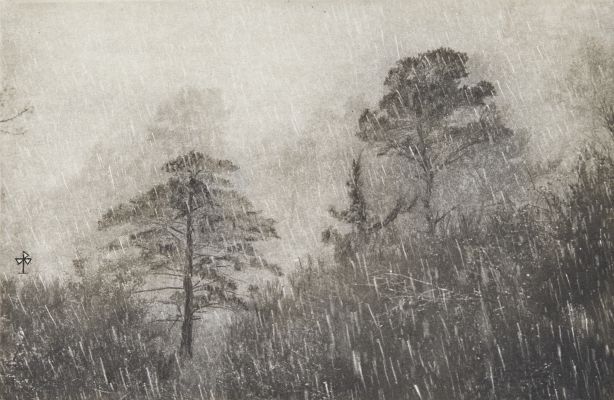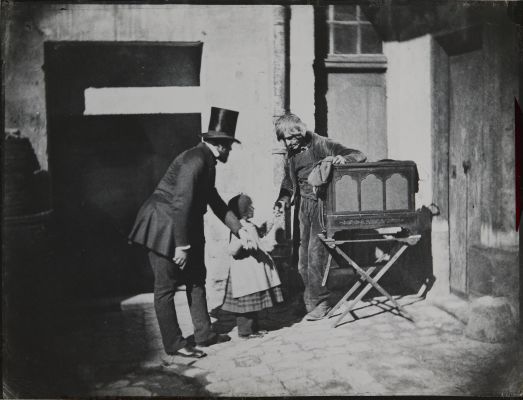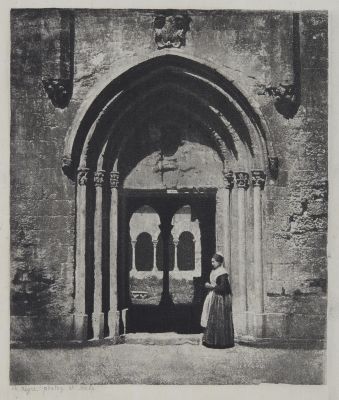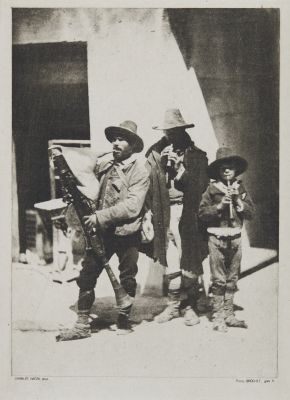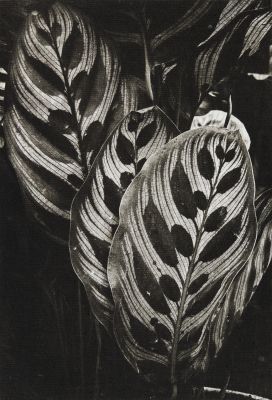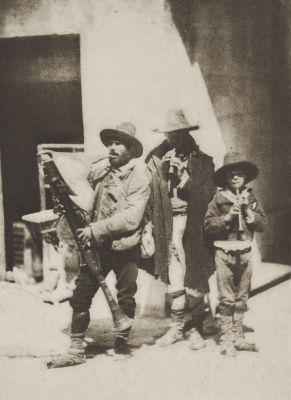
Title
Les Moulins de MontmartreArtist
Bayard, Hippolyte (French, 1801-1877)Date
1985 plate (1842 negative)Process
PhotogravureAtelier
Pierre Brochet a Beaumont du GatinaisImage Size
28.2 x 22 cmSheet Size
50 x 39 cm
Frenchman Hippolyte Bayard was one of the earliest experimenters in photography. While working as a civil servant in the Ministry of Finance in the late 1830s and early 1840s, he devoted much of his free time to inventing processes that captured and fixed images from nature on paper using a basic camera, chemicals, and light. The announcement of the inventions of Daguerre and Fox Talbot greatly diminished opportunities for recognition of Bayard’s contributions. Bayard is best known today for his 1840 self-portrait as a drowned man, to which he added text protesting the lack of recognition for his invention. Bayard was a founding member in the 1850s of the Société héliograph was one of only five photographers selected to be part of the Missions héliographiques in 1851, charged with the task of documenting France’s historic architecture for the Commission des Monuments historiques. During his lifetime, he was described as the “Grandfather of Photography” by several commentators. The Légion d’honneur (still considered today the highest order of military and civil decoration in France) awarded him the first level of merit—Chevalier— in 1863. In the late 1860s he left Paris and moved to Nemours near his lifelong friend, the actor and painter Edmond Geffroy (1804-1895). Bayard died there in 1887. [1]
Pierre Brochet (1922-2016) was a French photographer, printer and educator. He specialized in antiquarian photographic processes and in the early 1980s played a significant role in the revival of photogravure in France. In 1985 Brochet started the L’association pour la photographie ancienne (APA) which specializes in the study and the practice of the antiquarian photographic processes, especially photogravure. Over the course of his career Brochet, in addition to his own work, executed photogravure projects for many institutions including the Musée Carnavalet, Fondation Claude Monet, Centre National Pompidou and from photographs by a whose who of French photographers including Nègre, Atget, Boubat, Puyo, Salgado and many others. Brochet’s atelier was located in his home in Beaumont-du-Gâtinais, France.
References
[1] Getty web site https://www.getty.edu/art/collection/person/103KH7 cited 02/24/23
